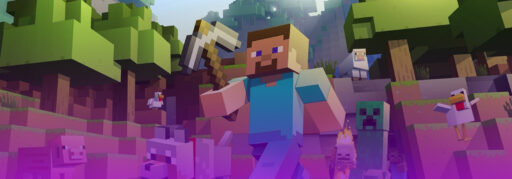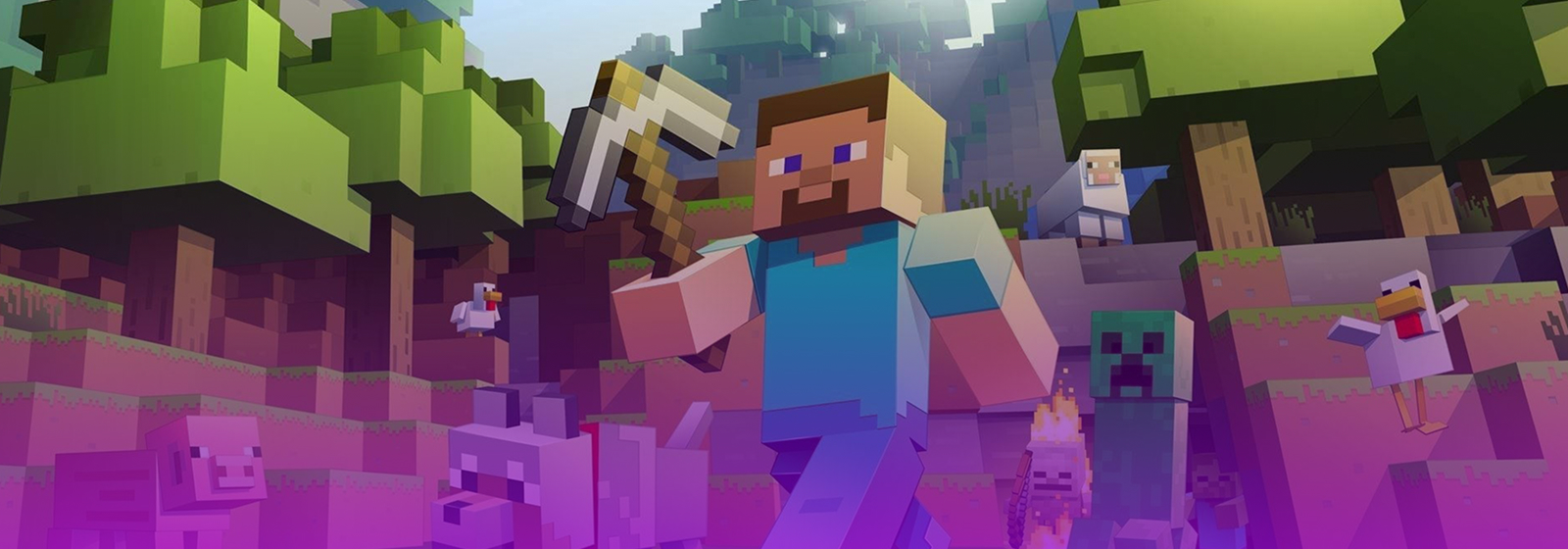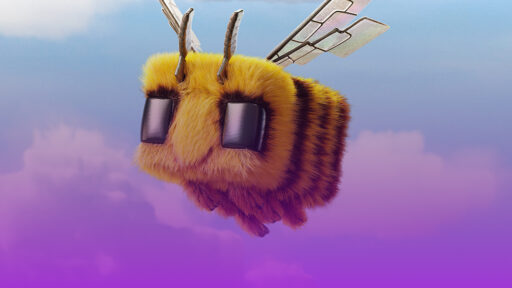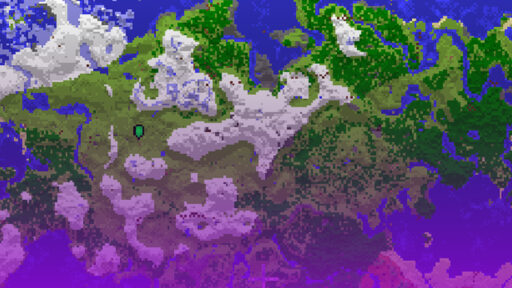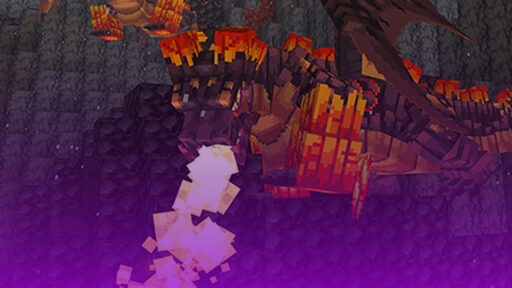On the 18th of November, 2011, Minecraft officially launched as version 1.0. It had been in development Beta for over 2 years, and during its first MINECON event, it had finally been “completed”. This release marked a pretty significant change in the game’s leadership, Markus “Notch” Persson passing the torch to lead developer Jens “Jeb” Bergensten.
Since its first official release, the evolution of Minecraft has been driven by a series of major version releases. These updates have consistently introduced new content, mechanics, and technical changes that have reshaped the core gameplay experience. The following is an explanation of every major update in Minecraft version history.

Major Version Updates
Update 1.0: The Adventure Update
(November 18, 2011)
Minecraft version 1.0 was the culmination of the “Adventure Update” cycle that began in Beta. It was the final step in the game’s initial development phase by providing players with a definitive goal. The main feature of this update was The End, a new dimension hosting the first official boss: The Ender Dragon. Upon defeating this mob, players would be greeted with an end poem and the game’s credits; a narrative conclusion to the survival experience. To support this progression, the update added what are now fundamental gameplay systems such as Enchanting gear and Brewing potions. Other additions included animal breeding, Hardcore mode, Mushroom islands and Nether Fortresses.
With the introduction of an “ending”, Minecraft went through a significant shift in the overall structure, at the dismay of some players. The game went from an indefinite survival sandbox to an adventure with an end objective. However, this update solidified the core gameplay loop that all players experience today: Gather resources in the overworld, Go to the Nether and find a fortress to acquire materials, and then use those materials to find a stronghold and activate a portal to The End.

Source: minecraft.fandom.com/wiki
Update 1.1
(January 12, 2012)
The very first Minecraft “update” that started the pattern of 1.X we see today. It introduced Spawn Eggs to Creative Mode, a significant quality-of–life feature for mapmakers and server administrators who could now more precisely place mobs. It also added the Superflat world type; a blank canvas for builders and redstone engineers, and bow enchantments.
This update signaled a design choice to cater to different playstyles, and not necessarily just focus on the survival experience. For redstone engineers, Superflat worlds were now the standard testing environment, without the obstructions of terrain generation. These features marked an early step towards making Minecraft a game that can be enjoyed by many different types of players.
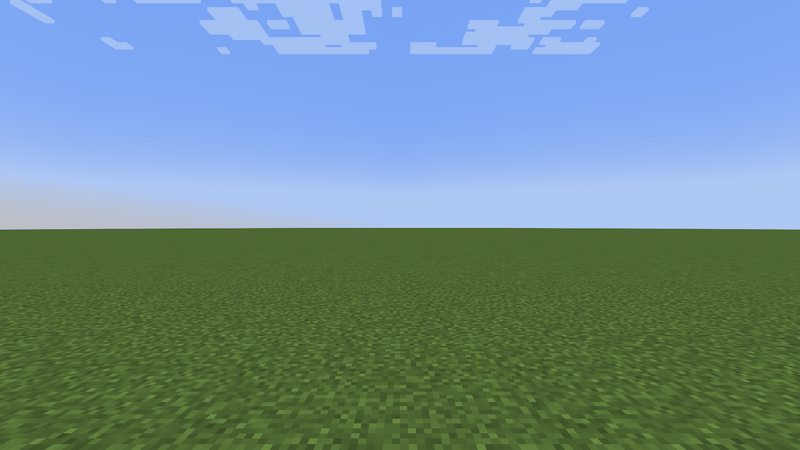
Update 1.2
(March 1, 2012)
A more substantial update with the addition of the jungle biome, complete with ocelots and new wood types. But more importantly, it doubled the world build height limit from 128 blocks to 256 blocks, redefining the potential scale of builds in Minecraft. Iron Golems were also added as patrols to defend villages.
The increased world build height was the most significant change in this update, specifically for the building community. This continued the trend of Mojang providing specific tools with each update to aid Minecraft’s distinct sub-communities.

Update 1.3
(August 1, 2012)
This update was a major technical overhaul that unified the game’s architecture. The most significant change was largely invisible to players; singleplayer mode was rebuilt to run on an internal server. The change streamlined the codebase for Mojang and enabled features like LAN play, the use of “cheats” (commands) in singleplayer, and the introduction of Adventure Mode for mapmakers. The update also added villager trading, with emeralds as a new currency, and new explorable structures in the form of Desert and Jungle Temples.
This was the first time the community broadly experienced the friction of technical progress. The internal server architecture was a disruptive event for the modding community, breaking many existing mods and forcing rewrites to accommodate the new structure. While it ultimately facilitated future development, the short-term cost was high. Some players reported new bugs and slight input lag in singleplayer, which was seen as a downgrade by some veterans of the old system. This established a long and recurring theme in Minecraft’s development where necessary technical refactors often come with short-term disruption and community friction.

Source: minecraft.fandom.com/wiki
Update 1.4: The Pretty Scary Update
(October 25, 2012)
A Halloween themed update that added content expanding both creative and combat options. It introduced Minecraft’s second boss, albeit an optional one, summoned by the player: The Wither, along with the wither skeletons required to summon it. Other new mobs included witches and bats. Farming was expanded in carrots and potatoes. For builders, flower pots and item frames were now new decorative options. The anvil provided a way to repair and rename items without losing enchantments.
A particularly transformative addition was the Command Block. This block was a powerful tool for the creative community, allowing mapmakers to execute server commands using redstone. It enabled the creation of complex adventure maps, custom minigames, and narrative events without the need for external mods. In Survival Mode, the wither was a new endgame boss. Zombies also gained the ability to infect villagers, creating a threat to villages if the player gets careless.
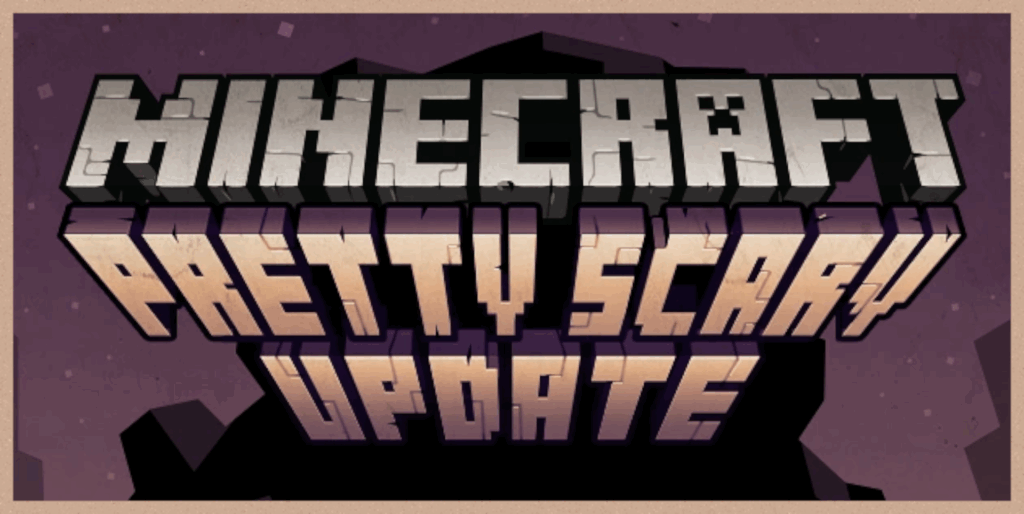
Update 1.5: The Redstone Update
(March 13, 2013)
An update for the redstoneers, transforming it from a simple tool to a more complex engineering system. The update introduced a suite of new redstone components: the comparator, hopper, dropper, daylight sensor and the trapped chest. It also added the block of redstone as a moveable power source. For builders, there was quartz, found in the nether. A new ore and a clean white decorative block set. A scoreboard system was now also available for mapmakers and server admins.
The Redstone Update led to “Redstone Engineering” becoming a more distinct subcommunity. The hopper automated item collection and transport allowing large scale industrial farms and automated storage systems. The comparator enabled analog signal processing and complex logic, helping create everything from item filters to in-game computers. This expansion attracted new types of players and led to a boom in online tutorials and communities dedicated to sharing complex contraptions.

Update 1.6: The Horse Update
(July 1, 2013)
This update added horses, donkeys and mules along with accessory items such as leads and carpets and separately a new building material, hardened clay. Version 1.6 also shipped with a new game launcher which made it easier to create profiles and load up different game versions.
The new launcher made it simple for players to go back to older versions of the game, something the modding community appreciated greatly. The update was generally well received.

Update 1.7: The Update that Changed the World
(October 25, 2013)
Update 1.7 was a massive overhaul of world generation. It doubled the number of biomes by adding landscapes such as Mesa, Savanna, and Roofed Forest. The world generation code was rewritten to group biomes by climates, making for a more logical layout. It also added stained glass, a long requested feature from builders.
With the new launcher from 1.6 and world generation from 1.7, it created the ideal conditions for the modding community. When it became clear that 1.8 would have significant code changes, breaking many different mods. A certain part of the modding community decided that they stay on Version 1.7.10 and thus creating the first “version anchor”. Minecraft Version 1.7.10 became a popular version for modding, with thousands of compatible mods and modpacks. For many players, the world generation and cave systems of this version have a certain nostalgic vibe from this era of Minecraft.
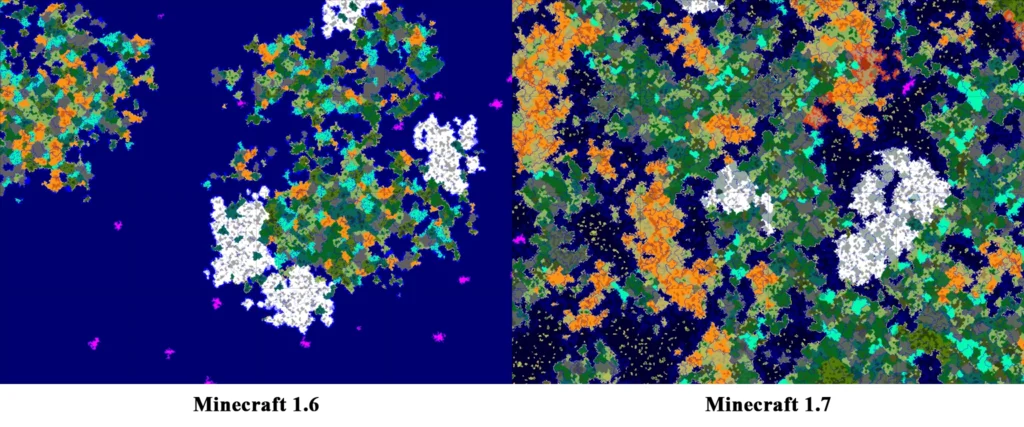
Source: minecraft.wiki
Update 1.8: The Bountiful Update
(September 2, 2014)
After over 300 days of development, 1.8 was the final major update released by an independent Mojang, just two weeks before the company’s acquisition by Microsoft was announced. It was called “The Bountiful Update” for its wide array of new features with no central theme. The update added Ocean Monuments, a large underwater structure guarded by new Guardian mobs. Three new stones were added: Diorite, Andesite and Granite. For builders, armor stands and banners held new decorative possibilities. For redstoneers, the Slime Block was a major addition, allowing the creation of slime block flying machines. The enchanting system was overhauled, now requiring lapis lazuli, but costing much less experience levels.
The Slime Blocks were the standout feature for the technical community, enabling a completely new type of redstone creations. The stone types were met with middling enthusiasm, with many complaining it just cluttered inventories, but they have since become a large part of detailed builds. The enchanting overhaul was well received for making good gear actually attainable with tens or hundreds of hours of grinding. Overall the update was a comprehensive content drop that affected nearly all subcommunities of Minecraft.
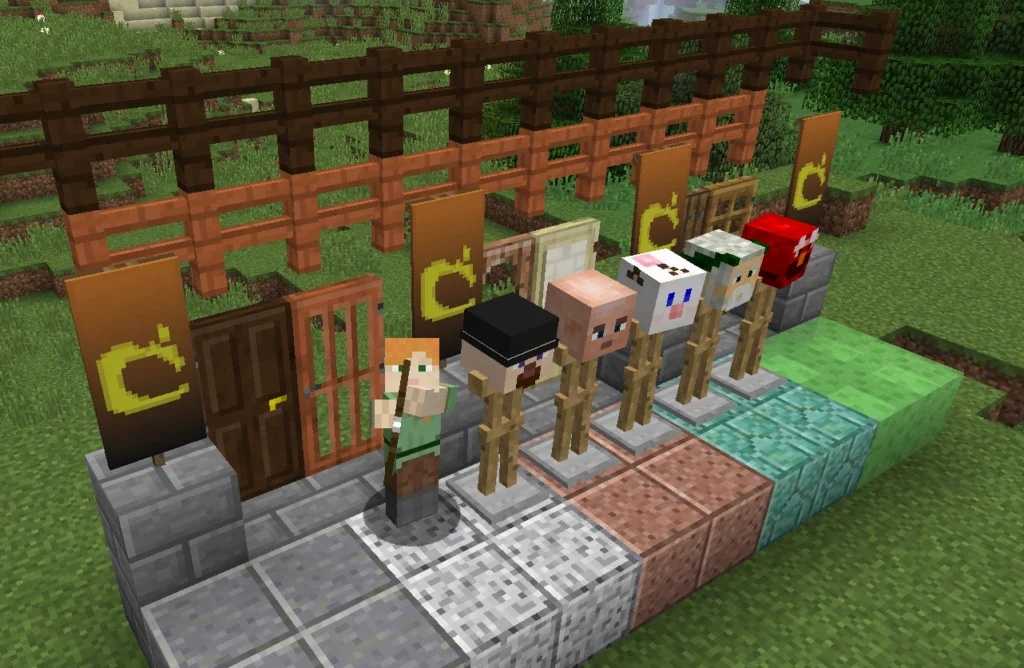
Update 1.9: The Combat Update
(February 29, 2016)
This was one of the most divisive updates in Minecraft’s history. It aimed to add depth to the combat system, but in doing so, it created a schism in the player base. The ability to “spam click” was removed and was replaced with an attack cooldown system. Shields were added for blocking and axes were rebalanced as slow but high damage weapons. The update also introduced the off-hand slot for dual wielding. Simultaneously, the End dimension was expanded with outer islands, End Cities and End Ships. They added new wearable gear called the elytra which allowed the player to glide.
Version 1.9 remains the most “controversial” update to this day. Mojang wanted to make combat more tactical. However, with a large portion of the PvP community having spent years mastering the old system, including certain techniques such as “block-hitting” (technically a bug), they felt as if their skills had been invalidated. As a result, large, popular servers such as Hypixel retained support for “1.8 combat” through the use of plugins. This cemented 1.8 as the de facto PvP version of Minecraft. For survival players however, the elytra was a significant addition for late-game travel.
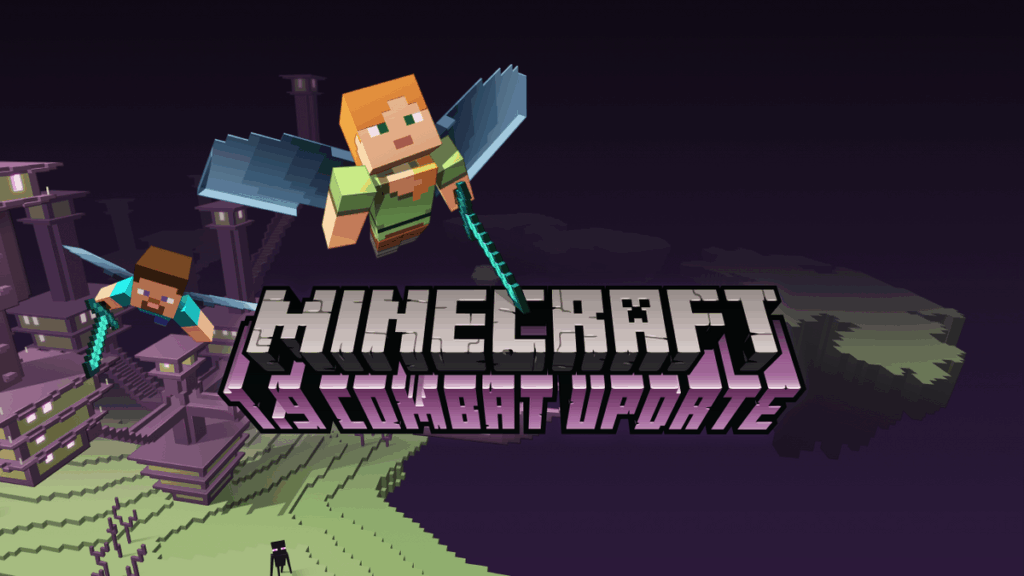
Update 1.10: The Frostburn Update
(June 8, 2016)
Following the 1.9 Update, Mojang decided to shift once again to a pattern of smaller, more frequent updates. Version 1.10 was a small themed update adding mobs from hot and cold climates: Husks, Strays and the Polar bear. In terms of blocks and structures, it added the underground Fossils, Magma blocks and Nether Wart blocks. It also added the Auto-Jump option in Controls.
This release was seen by many as a return to smaller and more frequent updates similar to the game’s early days, a nice change of pace after the long development cycles of 1.8 and 1.9.

Update 1.11: The Exploration Update
(November 14, 2016)
A more substantial update than the last one. It introduced the Woodland Mansion, a large procedurally generated dungeon. These mansions were home to new hostile Illager mobs: the Vindicator and the Evoker. To find these structures, players could acquire explorer maps from a new cartographer villager. The update also added Llamas, the Totem of Undying, and the Observer block, which was ported from Pocket Edition as a compact block update detector.
A particularly impactful addition was the Shulker Box. Crafted from Shulker shells, this block functioned as a portable chest, addressing a long requested solution to the matter of inventory management. They could be obtained in the late game which made the reward feel earned.

Update 1.12: The World of Color Update
(June 7, 2017)
Living up its name, the update brought with it new colorful blocks and creative tools. The main additions were Concrete Powder, Concrete, and Glazed Terracotta. The existing palette for wool and banners were also brightened and beds were made dyeable. On the technical side, achievements were now data driven. And a recipe book was added to the survival inventory to aid new players. The update also added parrots.
For builders, this update was a highly anticipated addition. Concrete provided clean, solid colors while Glazed Terracotta offered new patterns for decoration. The switch to a JSON-based Advancement system let mapmakers and server admins create achievements without the need for mods. The recipe book helped new players integrate with the game better and somewhat alleviated the need for constantly looking recipes.
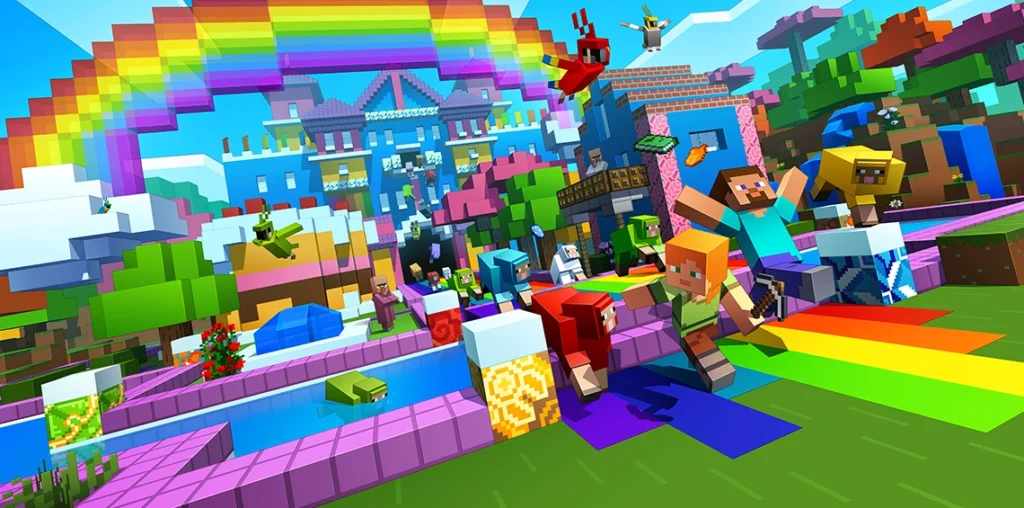
This period also marked a significant milestone for the C++ based version of the game, previously only for mobile devices called Pocket Edition. With the Bedrock Edition 1.2 “Better Together” update, Mojang unified the codebase for consoles and mobile, enabling cross-platform play. Many features from Java were ported to Bedrock such as stained glass, banners, and armor stands, aligning it more closely with Java Edition.
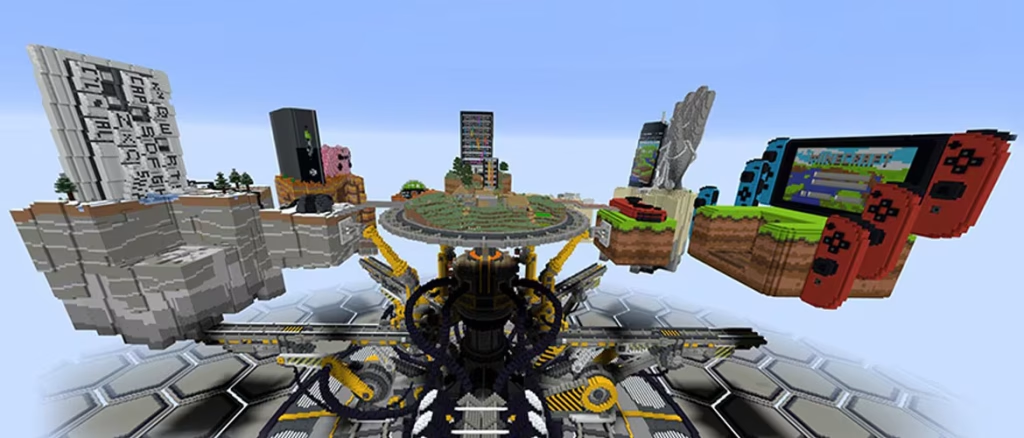
Update 1.13: The Update Aquatic
(July 18, 2018)
One of the largest updates, in terms of content and technical changes. As the name suggests, it aimed to breathe new life into the oceans of Minecraft while performing the biggest technical refactor in the game’s history. The content part transformed oceans into vibrant ecosystems with new biomes like Coral Reefs, structures like Shipwrecks, and mobs such as Dolphins, Turtles and the Drowned, who sometimes dropped a new weapon, the Trident. It also added swimming into Minecraft’s movement system.
On the technical side, Mojang performed “The Flattenning”, by rewriting the block ID system from numeric IDs to namespaced string IDs (e.g. minecraft:dirt). This was done since the old numeric IDs were close to hitting their limit which was stifling how much could be added to the game. This change allowed subsequent updates to add numerous new blocks, however, it broke nearly every command, mod, and third-party software that was made for the game previously, forcing a massive community-wide effort to update. Many performance issues arose from the technical changes which took quite a few patches to stabilize. While the content itself was praised, the disruption made 1.13 a troubling transition for many.
The parallel release for Bedrock Edition was Version 1.4, under the same name. With the same content being added as Java.

Update 1.14: Village and Pillage
(April 23, 2019)
A village-centric update that completely overhauled vanilla villages and their inhabitants. Villages were given biome specific architecture, and the villagers were given customizable professions, daily schedules and new outfits. The trading system was revamped, requiring villagers to have access to their “job site” to restock trades. A new Illager faction called the Pillagers was added. They would spawn in Pillager Outposts and would Raid villages given certain circumstances were met. The update also brought with it Scaffolding, Lanterns, and utility blocks such as the Loom and Stonecutter.
Version 1.14 created a new gameplay “meta” with the new villager trading system. Players discovered that trading halls could be created to easily obtain any enchanting book by constantly swapping the job site until they got the item they needed. This made top-tier gear more accessible but created some discourse about power creep. Once again, there were some pretty serious performance issues, especially on servers, due to the new Villager AI, taking more patches to fix.
For Bedrock Edition, The Village and Pillage update was rolled out across several updates, from versions 1.11 to 1.13. They incrementally added features like the Pillagers and Job Stations until the feature set was on par with Java.
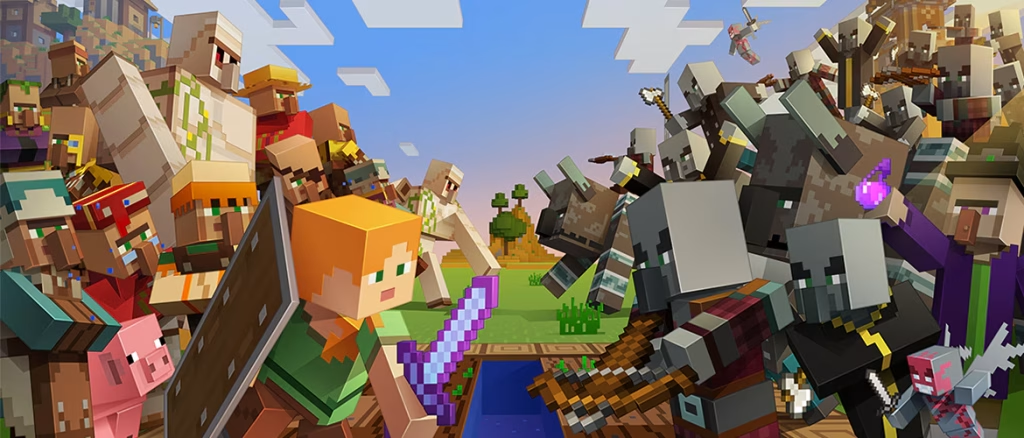
Update 1.15: Buzzy Bees
(December 10, 2019)
A fairly small content update that added Bees, Bee Nests and Honey Blocks. Its primary, although unstated, purpose was to be a bug fixing and performance focused release, directly addressing the stability and lag issues from 1.13 and 1.14.
Some players were a little disappointed with the meagre amount of content, redstoneers were especially pleased with the addition of Honey Blocks. They acted similar to slime blocks with how they stuck to other blocks, except that they were considered transparent and did not stick to slime blocks. These key differences allowed the construction of larger and more complex piston contraptions than before.
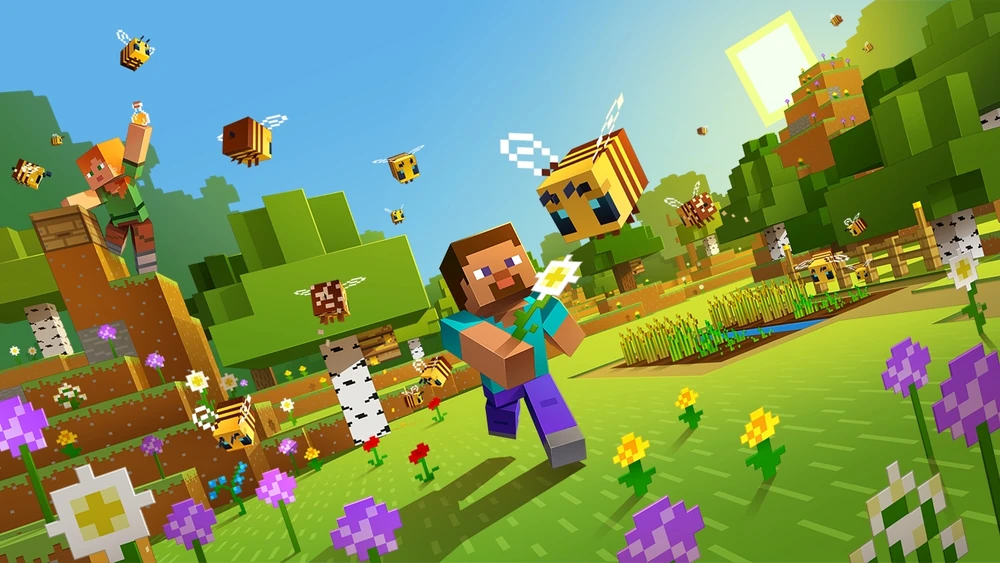
On Bedrock Edition, the “Buzzy Bees” update was added to Version 1.14 (Yes I know, not confusing at all). Update 1.15 for Bedrock added the RTX Beta to Minecraft on supported devices.
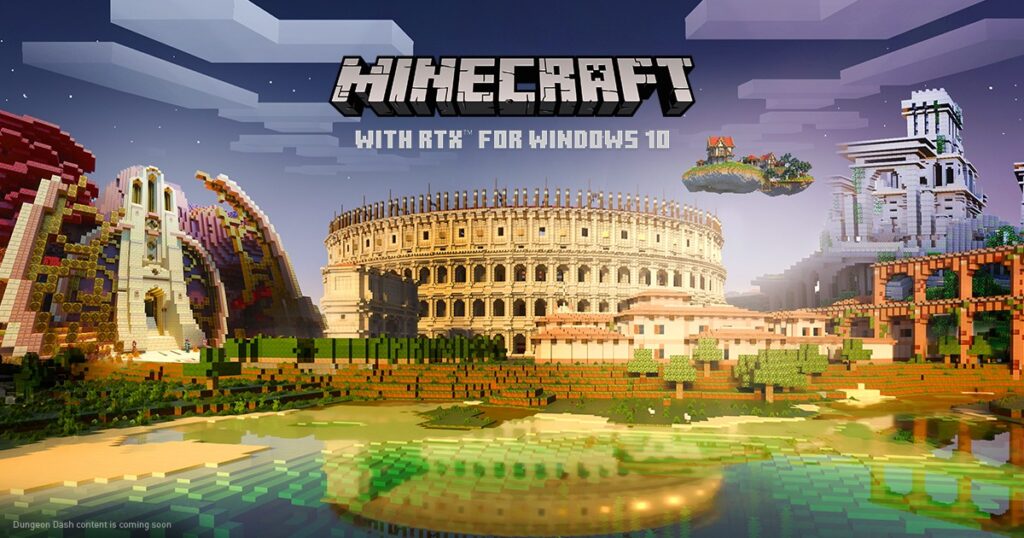
Update 1.16: The Nether Update
(June 23, 2020)
Often considered to be one of the best updates to Minecraft, The Nether Update revamped the nether. The monotonous hellscape transformed into a dimension with its own ecosystem. Four new biomes were added: the Crimson Forest, Warped Forest, Soulsand Valley and Basalt Deltas. Each had its own vegetation, atmosphere and sometimes new mobs. Zombie Pigman were changed to now be Zombie Piglins, with a healthier cousin counterpart, Piglins. The Piglins are able to barter using gold and hunt a new aggressive mob, the Hoglin. Lava lakes could now be traversed using Striders. New structures such as Bastion Remnants could be found and housed the pathway to one of the most meaningful additions to the game’s progression in nearly a decade: Netherite, a completely new tier of equipment, superior to even diamond. Ancient Debris was added as a rare new ore under the nether and needed to be combined with cold to make Netherite.
Version 1.16 is pointed to whenever the community wants to mention an update done right. It overhauled an existing part of the game’s system in a successful manner by adding significant depth and purpose to the nether. Netherite was well received since it augmented diamond gear and respected player progression instead of rendering it obsolete.
The Nether Update came to Bedrock Edition as Version 1.16, finally creating major version number parity between the two editions. A later update, 1.16.200 added full Ray Tracing support in partnership with nVidia for compatible Windows 10 devices only on Bedrock.

Update 1.17: Caves & Cliffs – Part 1
(June 8, 2021)
The first half of a split update, it was a preliminary update, introducing most of the new mobs and blocks. Players could encounter Axelotls, Goats, and Glow Squids, while gathering resources such as Copper, Amethyst, Dripstone and Moss. The announced new world generation was deferred to Part 2.
The decision to split the Caves & Cliffs Update was due to the complexity of the promised features and the difficulty of getting work done during the pandemic. While it led to some disappointment from players expecting a full world-generation overhaul, it did set a precedent for expectation management in subsequent years.
Bedrock Edition 1.17 was released alongside the Java release with the same new content and the split updates.
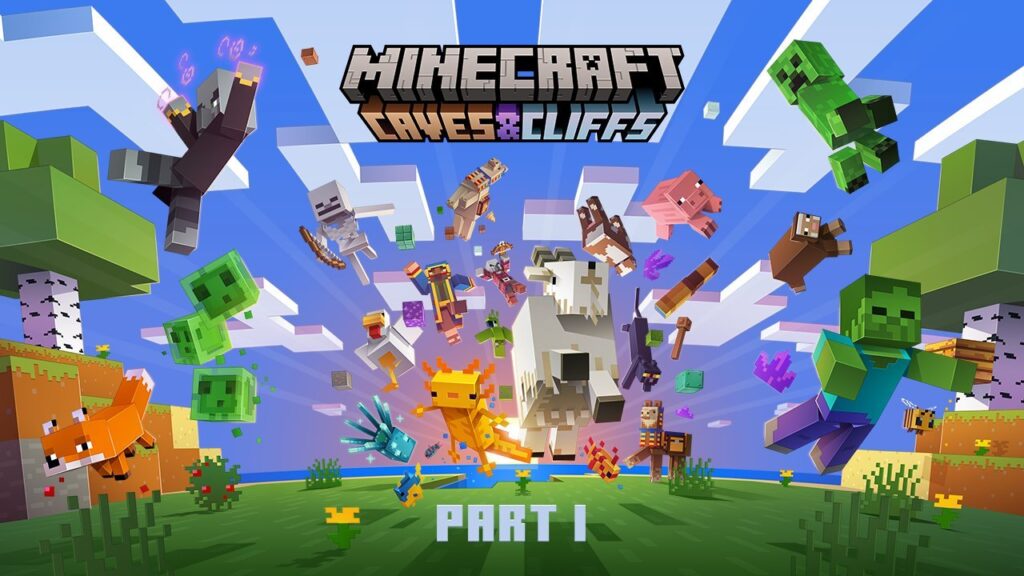
Update 1.18: Caves & Cliffs – Part 2
(November 30, 2021)
This was the main release of the two-part update, completely overhauling the world-generation, increasing the world build height to 320 and increasing the depth of the world to -64. It introduced vast new cave systems and new mountain biomes like Meadows and Jagged Peaks. Ore distribution was adjusted to fit the new verticality. And a “World Blending” feature was added to smoothly integrate old worlds with the new terrain.
This was one of the most significant changes to the Overworld since the game’s release, transforming caves into an experience of exploring massive caverns. However some players who were not used to this found it difficult to traverse, and large caves to be lacking much unique content.
Bedrock Edition 1.18 also brought the same features as Java. One of the best changes was the near complete seed parity between Bedrock and Java for the very first time.

Update 1.19: The Wild Update
(June 7, 2022)
An update that delivered on promises that were delayed from Caves & Cliffs. Two major biomes were introduced: The Deep Dark, adding with it the Warden, and the Mangrove Swamp, with Mangrove trees, Mud blocks, and frogs. Ancient cities were also added which were large underground structures with some unique loot and builds. The Allay; winner of the 2021 mob vote was also included.
The Wild Update’s reception highlighted some of the issues with presenting conceptual ideas to the community in early development. During the announcement, Mojang showed concept art for a revamped Birch Forest and Fireflies. When these features were later scrapped, fireflies for being poisonous to real world frogs and the birch forest for not meeting design standards, players were very disappointed. They argued that the “Wild” theme of the update did not fully deliver on all its promises.
Bedrock Edition 1.19 added the same features as Java, maintaining the parallel release schedule.
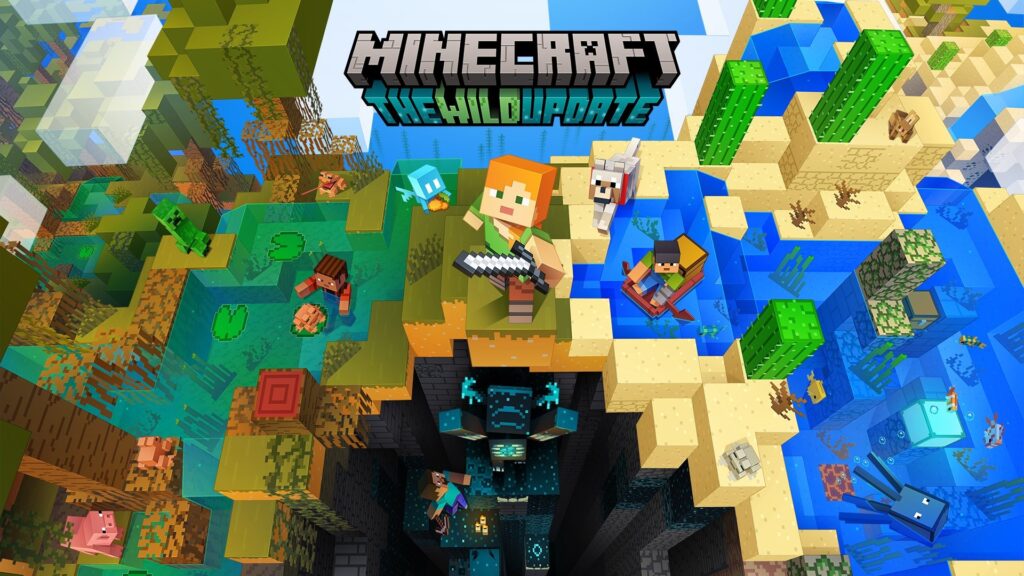
Update 1.20: Trails and Tales
(June 7, 2023)
Shifting focus from large-scale world generation changes to a bigger focus on player creativity and storytelling, this update was themed around “self-expression”. The primary feature was Archaeology, which let players use a Brush tool on “Suspicious Sand” and “Suspicious Gravel” to uncover Pottery Sherds. Armour trims were introduced, allowing users to visually customise their armor using Armour Trims found throughout the world. Other major additions included a rideable Camel, The Cherry Grove biome and decorative blocks like a full Bamboo wood type set, Hanging Signs and Chiseled Bookshelves.
Version 1.20 was generally well received from its creative features. The Armour Trims were an especially popular addition. A significant balance change was the new requirement of a Netherite Upgrade Smithing Template, only found in Bastion Remnants, to craft Netherite Gear. This made obtaining Minecraft’s highest tier equipment a little more of an involved process.
Bedrock Edition 1.20 alongside its Java counterpart, with the same feature additions.

Update 1.21: Tricky Trials
(June 13, 2024)
The Tricky Trials Update was a combat focused update that added a new challenge to Minecraft. With the introduction of the Trial Chambers, a procedurally generated structure filled with traps, puzzles and combat encounters that scaled with the number of players. The chambers were home to two new mobs: The Breeze and The Bogged. A new weapon was also added, the Mace, which deals more damage the further the player falls before hitting the opponent. For builders, a whole set for Tuff blocks were added including more uses for Copper. For redstoneers, an automated Crafter was added, allowing for crafting without player involvement.
Version 1.21 received mostly positive feedback for providing a repeatable combat challenge suitable for groups of players. The Crafter was a long requested feature by the Redstone community and new uses for copper was a welcome change.
Bedrock Edition 1.21 was simultaneously as the Java release with all the same additions.
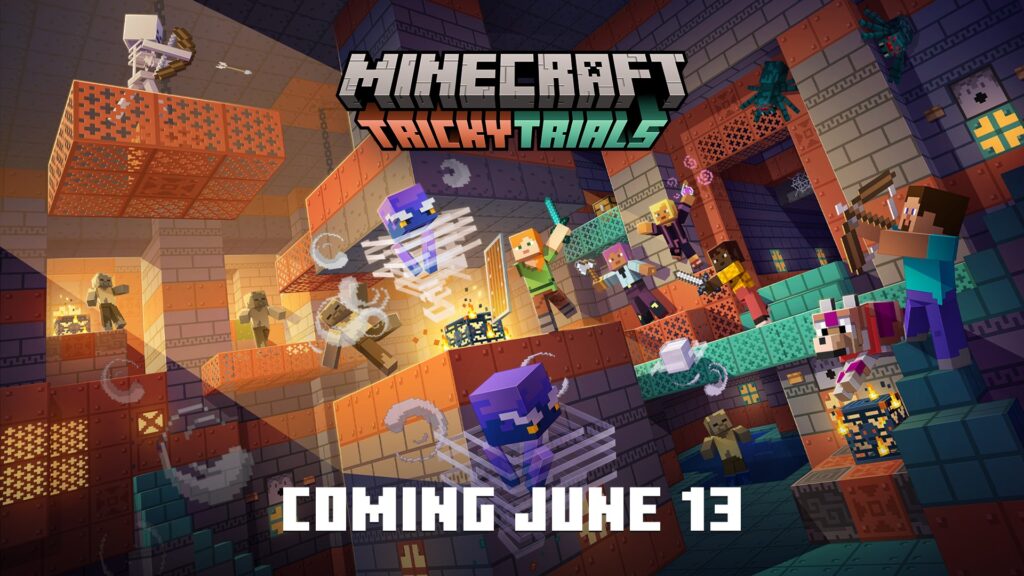
Drops
After the 1.21 Tricky Trials update, Mojang announced that they planned on changing the update strategy. This was in response to players asking for frequent content drops. The studio moved away from a model of a single large themed update per year, instead adopting a new rhythm of smaller, yet more frequent updates called “Game Drops”.
The drops would vary in size and were not bound to a single theme, letting the development team decide when a feature is ready to be released rather than holding off for an annual update.
Community reception seems to have carried with some players appreciating the steady flow of new content (and giving people like me more to write about), while others were left worrying about the modding community who would have to not only update their mods constantly, but also mod loader developers constantly needing to adapt their loader to fit with the new Minecraft releases.
Update 1.20.5: Armored Paws Drop
(April 23, 2024)
This was Mojang testing the waters and the first example for the above mentioned “Game Drops”. It introduced the Armadillo, a passive mob found in the Savanna and Badlands biomes that drops Scutes when brushed. These Scutes could be used to craft the new Wolf Armour, providing some much needed protection for the players’ canine companions. The update also diversified the wolf textures by adding regional variants depending on their spawn biomes.
Beyond the new mobs and items, Version 1.20.5 brought some technical and quality-of-life improvements. The user interface was refreshed with a new darkened background and blur effect for menus. To improve performance and load times, the default size of spawn chunks were reduced, with an option to configure this with commands. Tamed Wolves also received a health buff, with their health now being doubled to 40 HP from 20 HP.
The drop was also released on Bedrock with Version 1.20.80, containing the same feature set.

Update 1.21.2: Bundles of Bravery Drop
(October 22, 2024)
The addition of a long awaited feature: The Bundle. An item that allowed players to store multiple types of items in one inventory slot, a new solution for inventory management. The update also brought a tiny bit more life to oceans and rivers by adding baby versions of Squids, Glow Squids and Dolphins, as well as varied sizes for Salmon.
Thrown Ender Pearls were also improved to reliably load chunks as they travel, making long distance and cross dimensional travel with them more predictable. The drop also included some variations for Trial Chamber hallways and an improved texture for Redstone Torches.
Bedrock Edition 1.21.40 launched alongside Java with the same features.
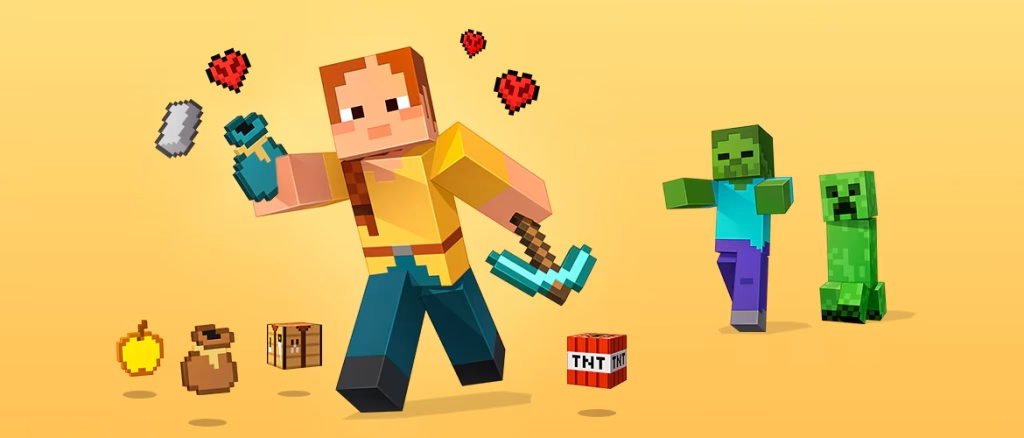
Update 1.21.4: The Garden Awakens Drop
(December 3, 2024)
This drop introduced a mysterious and atmospheric new biome variant to the Dark Forest, called the Pale Garden. This biome features Pale Oak trees, along with a new white wood set, and a unique ambient soundscape defined by silence. It is home to the Creaking and its associated Creaking Heart, which produced a new material: Resin. Resin can be crafted into a new family of decorative blocks and used as Armor Trim material. The Pale Garden also contained Eyeblossoms, a flower that would open and close with the day/night cycle. Pillagers were also afraid of the Creaking.
The reception to the new update was somewhat mixed. Builders appreciated the new white wood set and new yellow blockset. But some players thought it should have added more content.
Bedrock Edition 1.21.50 released at the same time as the Java update with the same featureset.

Update 1.21.5: Spring to Life Drop
(March 25, 2025)
The “Spring to Life” drop focussed on enhancing the ambiance of the Overworld. It added a variety of new decorative plants, including Leaf Litter, Wildflowers and Bushes, bringing some more detail and color to several biomes. Climate variations of animals were added with Cold and Hot variants of Cows, Chickens and Pigs. Sheep would also now retain the color of their wool even after being sheared. New ambient sounds were added to Deserts and Badlands, and falling leaf particles would spawn under all tree types. A notable visual change was new textures for every Spawn Egg, making them easily identifiable. The update improved gameplay loops by revamping the trades for Cartographer and Wandering Trader. The Lodestone recipe was made cheaper to encourage more usage for navigation. Technical changes included an expansion to Simulation distance, now allowing random tick (e.g. crop growth) to run on any loaded chunks, not just ones close to players.
Reception to this drop was quite positive, while it did not add a huge amount of content, players were adjusting the new update schedule and tempered the expectation. The changes added a fresh feel to exploration in Minecraft.
Spring to Life Drop came to Bedrock in Version 1.21.70 with all the same additions.
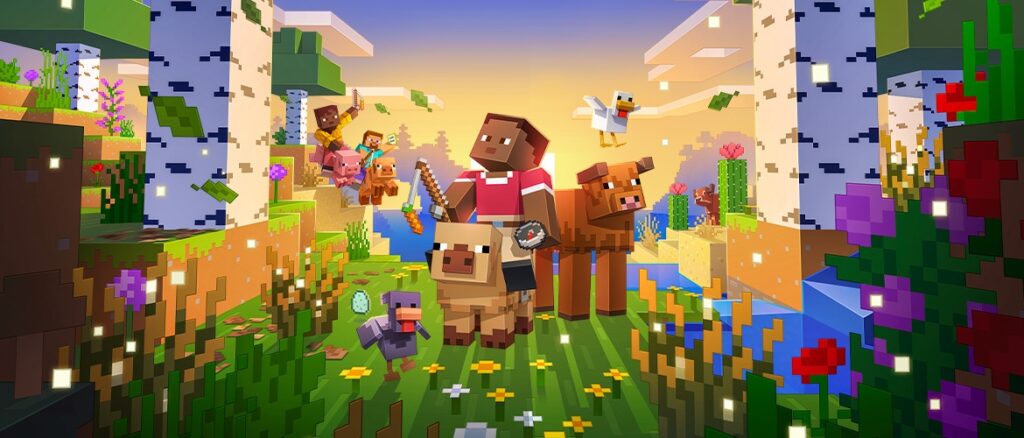
Update 1.21.6: Chase the Skies Drop
(June 17, 2025)
The “Chase the Skies” drop introduced Minecraft’s first multi-person flying mount: The Happy Ghast. In order to tame it, players are required to find, or craft (yes craft, there’s a recipe) a Dried Ghast block. It must then be hydrated by placing it in water and after a certain while, it will spawn a Ghastling. It can be fed Snowballs to raise it and once grown, players can equip it with a Harness and fly with up to three friends. The update also added the Locator Bar, which replaced the XP bar (when not in use) and can be used to see the direction and relative distance to other online players in the server. Saddles were finally made craftable using leather and iron. Leash mechanics received an overhaul allowing entities to be leashed to other entities.
The reception to this drop was mostly positive, a large number of players did not like that the Locator Bar could not be used alongside the XP Bar and would have to be replaced when turned on.

The drop was released on Bedrock as Version 1.21.90, launching with Vibrant Visuals exclusively to this Edition. Vibrant Visuals was a graphics overhaul adding sun shadows, water caustics, reflections on the surface of water and some amount of PBR. The standout feature was the unique implementation of pixel locked shadows.

Summary of Every Major Minecraft Version & Drop
| Version | Official Name | Release Date | Features & Impact |
| 1.0 | Adventure Update | Nov 18, 2011 | Introduced The End, brewing, and enchanting, giving Survival a narrative goal. |
| 1.1 | (Unnamed) | Jan 12, 2012 | Added Superflat worlds and Creative spawn eggs, empowering creators. |
| 1.2 | (Unnamed) | Mar 1, 2012 | Added Jungle biomes and raised the world height to 256, enabling grander builds. |
| 1.3 | (Unnamed) | Aug 1, 2012 | Merged single-player and multiplayer, adding LAN, trading, and new structures. |
| 1.4 | Pretty Scary Update | Oct 25, 2012 | Added the Wither boss and Command Blocks, revolutionizing mapmaking. |
| 1.5 | Redstone Update | Mar 13, 2013 | Overhauled redstone with hoppers and comparators, enabling complex automation. |
| 1.6 | Horse Update | Jul 1, 2013 | Introduced horses for travel and a new launcher for version management. |
| 1.7 | The Update that Changed the World | Oct 25, 2013 | Fundamentally rewrote world generation, adding dozens of new biomes. |
| 1.8 | Bountiful Update | Sep 2, 2014 | Added Ocean Monuments, slime blocks, and banners; the final pre-Microsoft update. |
| 1.9 | Combat Update | Feb 29, 2016 | Overhauled combat with attack cooldowns and expanded The End with Elytra. |
| 1.10 | Frostburn Update | Jun 8, 2016 | A smaller update adding polar bears, husks, strays, and fossils. |
| 1.11 | Exploration Update | Nov 14, 2016 | Added Woodland Mansions, Illagers, Llamas, and Shulker Boxes. |
| 1.12 | World of Color Update | Jun 7, 2017 | A builder-focused update adding Concrete, Glazed Terracotta, and Parrots. |
| 1.13 | Update Aquatic | Jul 18, 2018 | Revitalized oceans and performed “The Flattening,” a massive technical overhaul. |
| 1.14 | Village & Pillage | Apr 23, 2019 | Completely revamped villagers, trading, and added the Raid mechanic. |
| 1.15 | Buzzy Bees | Dec 10, 2019 | Added bees and honey blocks, with a major focus on bug fixes and performance. |
| 1.16 | Nether Update | Jun 23, 2020 | Transformed the Nether with new biomes, mobs, and the Netherite gear tier. |
| 1.17 | Caves & Cliffs: Part I | Jun 8, 2021 | The first half of a split update, adding new mobs and blocks like copper and amethyst. |
| 1.18 | Caves & Cliffs: Part II | Nov 30, 2021 | The second half, overhauling world generation with a new world height and vast caves. |
| 1.19 | The Wild Update | Jun 7, 2022 | Introduced the Deep Dark (Warden) and Mangrove Swamp biomes. |
| 1.20 | Trails & Tales | Jun 7, 2023 | Focused on self-expression with Archaeology, Armor Trims, Camels, and Cherry Groves. |
| 1.20.5 | Armored Paws | Apr 23, 2024 | A “drop” adding Armadillos, Wolf Armor, and new wolf variants. |
| 1.21 | Tricky Trials | Jun 13, 2024 | Added Trial Chambers, the Mace, and the automated Crafter block. |
| 1.21.2 | Bundles of Bravery | Oct 22, 2024 | A “drop” that finally added Bundles and baby squid/dolphins. |
| 1.21.4 | The Garden Awakens | Dec 3, 2024 | A “drop” introducing the Pale Garden biome and the Creaking mob. |
| 1.21.5 | Spring to Life | Mar 25, 2025 | A “drop” focused on ambiance, adding new plants, sounds, and mob variants. |
| 1.21.6 | Chase the Skies | Jun 17, 2025 | A “drop” update adding the Happy Ghast flying mount and craftable saddles. |
Conclusion
Minecraft has evolved significantly over the past decade and a half. Starting at Versions 1.0 to 1.21.6, we can see that community reception has driven the game’s development, from the development schedule and the content. Despite some controversies regarding certain updates, community reception remained a significant factor influencing development priorities. The recent adoption of the “Game Drops” model aims to keep players engaged continuously instead of the annual “two-week Minecraft Phase”.
Looking for affordable Minecraft Server Hosting? Prices start at $1.99. Go to Cybrancee.com and create your own Minecraft Server.
